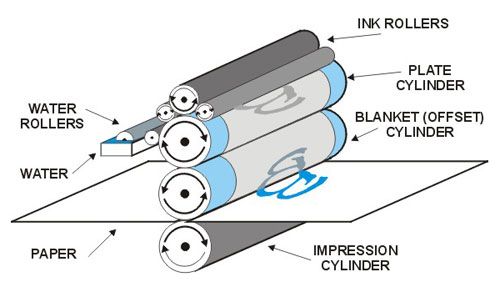A Comprehensive Overview to Comprehending Litho Printing Techniques
The globe of litho printing, a method originating from the late 18th century, is a remarkable mix of history, scientific research, art and advancement. Remain with us as we trip into the exciting realm of litho printing.
The Historic Advancement of Litho Printing
The historical trajectory of litho printing, a critical development in the realm of communication, is an exciting tale of human ingenuity. The process developed with the arrival of the rotary press, which considerably boosted performance. Each phase of litho printing's development showcases mankind's ruthless pursuit of performance and quality in aesthetic communication.
Translating the Scientific Research Behind Litho Printing Inks
Progressing in the exploration of litho printing techniques, the emphasis currently moves to the science behind litho printing inks. The structure of these inks, their drying out procedure, and color mixing strategies form the backbone of this complicated art type. Understanding these components is important to understanding the craft and attaining the preferred print results.
Make-up of Litho Inks
In lithographic printing, the fundamental function of litho inks can not be overemphasized. The make-up of litho inks differs depending upon its purpose, yet generally, they are composed of 2 primary components - automobiles and pigments. Pigments, the color-providing components, are finely ground fragments suspended in the lorry, a liquid that lugs the pigment onto the printing surface area. The lorry is a complicated mixture of solvents, resins, and oils, which influence the ink's drying out time, attachment, and gloss. Furthermore, various ingredients are existing to enhance specific residential or commercial properties like circulation, drying out, and resistance to environmental impacts. Each part plays a critical component in the last print's high quality, making the precise solution of litho inks an intricate science.
Ink Drying Refine
From the composition of litho inks, focus turns to the interesting process of ink drying out. 2 main methods are utilized in litho printing: oxidative drying and absorption. Absorption, on the various other hand, involves the ink seeping into the paper fibers, which is a faster procedure however can lead to much less vivid colors.
Shade Combining Strategies
While the drying procedure plays a key role in litho printing, the scientific research of shade mixing methods holds equal value. The scientific research behind litho printing inks also takes into account the openness of the ink, which influences exactly how shades overlay and mix.
The Art and Layout Elements in Litho Printing
Litho printing breathes life into art and design with its distinct elements. Litho printing fits a variety of colors, enabling artists to produce lively and vibrant prints. This combination of precision and flexibility makes litho printing a recommended selection for several musicians and designers.
Modern Applications of Litho Printing Methods
Litho printing techniques have located substantial usage in the modern-day industrial field. Its impact and significance remain to expand with the introduction from this source of new innovations and modern technologies in the area. This area will certainly check out these modern applications and the transformative duty they play in the printing market.
Industrial Litho Printing Makes Use Of
Litho printing remains an important part of the commercial field. High-volume printing jobs, such as the production of books, papers, and product packaging, depend on litho printing for its capability to deliver remarkable picture quality and expense efficiency. Litho printing likewise provides a wide color range, superior to that of electronic printing.
Developments in Litho Printing
Pushing the boundaries of typical strategies, modern-day advancements have fueled a host of advancements in litho printing. These breakthroughs have not only enhanced the top quality and efficiency of litho prints yet likewise broadened its application scope. One famous development is digital litho printing, which incorporates the merits of digital technology with litho's high-grade output. This hybrid design supplies faster arrangement times, minimized waste, and enables on-demand printing. One more notable development is the introduction of eco pleasant inks. These inks, made from veggie or soy-based remedies, have dramatically decreased the sector's ecological impact. litho printing. Furthermore, the advancement of sophisticated plate innovation has structured the printing procedure, resulting in sharper images and boosted shade fidelity. These innovations emphasize the enduring relevance of litho printing in the modern-day world.
Discovering the Process of Litho Printing: Action by Action

Challenges and Solutions in Contemporary Litho Printing

In spite of the precision and tradition that litho printing happily supports, it is not check my blog without its set of contemporary obstacles. The most common problems consist of the high first setup expense, difficulty in printing variable data, and environmental worries as a result of chemical usage. Nonetheless, options are arising as technology progresses. Digital litho printing permits economical brief runs and easy customization, dealing with the problem of variable information. Environmentally-friendly inks and more secure plate-making procedures alleviate environmental concerns. Additionally, improvements in automation have actually lowered labor prices, better democratizing the lithography process. Therefore, while there are difficulties, the litho printing market is proactively adjusting to satisfy them head-on, ensuring its relevance in the future.
Final thought
In verdict, litho printing, with its rich history and clinical intricacies, holds a substantial place in the print industry. The future of litho printing hinges on its ability to adjust to these changing demands, attesting its enduring worth in a developing market.
